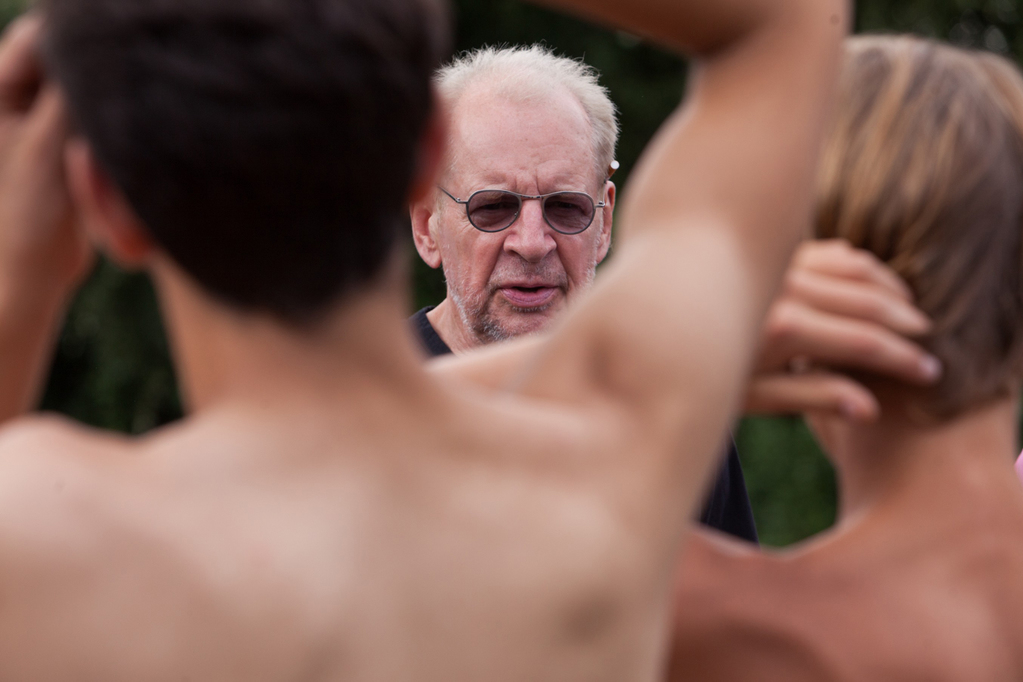
Some weeks ago, I was fortunate enough to catch Larry Clark’s The Smell of Us (2014) on a big screen in Barcelona: from the very first moments, I was totally enthralled. Because it plunges you, violently, into the smells of sweat, sex and drugs; because it makes you feel the vibration and speed of skaters’ wheels; because its apparently casual, hand-held camera style is incredibly precise and focused; because it begins by dissecting a space (the square behind the Palais de Tokyo in Paris where his group of skaters gather) with a resolute, architectural eye, and ends by revealing the inevitably fluctuating nature of such groups; because, all of a sudden, you are surrounded by drugged bodies in the midst of a rave party, your heartbeat melting with the musical pulsations; and because Clark knows how to render the tension of a close-up, or transform a single gesture—the absent look of Math (Lukas Ionesco), his face turned to one side, his body passively offered—into a strong, resonant moment.

The Smell of Us may be Clark’s best film, but its reception has turned out to be worse than discreet. Controversy doesn’t always help films, but it usually ensures a bigger audience. In this case, however, the brouhaha around Clark’s seemingly chaotic shooting methods hasn’t done much for either the critical appreciation or the theatrical visibility of the work. In January, it had a commercial release in France and, since, has only been shown in a few (too few, in my opinion) festivals around the world.
Youth—as an attitude, a certain kind of energy, a way of inhabiting the world—has driven Clark’s work since its very inception. Even if his depiction of this milieu tends to be grim, the director has often been accused of idealizing “teen spirit” and fetishizing his actors’ bodies. But the truth is that Clark has always portrayed, in surprisingly varied ways, the contradictions between sex, social class and power relations that arise inside (and, crucially, outside) teen groups.

The Smell of Us is not really interested in fetishizing its characters or freezing their pose; it paints them via a breathtaking clash of violence and tenderness. This is the exact opposite of making people into fetishes. Clark’s obsession with bodily flesh is no secret, but it has never been empty or superficial. In his films, bodies become what they are to be, in relation to a specific environment—sometimes in ways we can’t predict. In The Smell of Us, this environment includes mobile phone cameras and the Internet, an ever-accessible market of porn, and the stark law of sexual supply and demand.
But if the film puts anything in question, it’s the “decadent youth” image that the characters themselves adopt and project: the movie begins on the outside, seemingly promulgating this image, in order to progressively enter the teens’ domestic spaces and inner selves. It begins by asserting the power of these teenagers—who seem to have freely decided to commodify their youth because it sells well—but it ends by painfully twisting this vision, showing them to be powerless, prisoners of their own freedom.

Asked how he completes his movies in such a stressful environment (of his own making), Clark answers: “I don’t know. My body does it.” And certainly you can feel (as well as see) his body, flesh and blood, in The Smell of Us. For this is a movie with a confronting, uneasy, even disconcerting dramatic development—but it’s also one of those rare films that takes the sensorial, kinetic and emotional properties of cinema to a whole new level.



